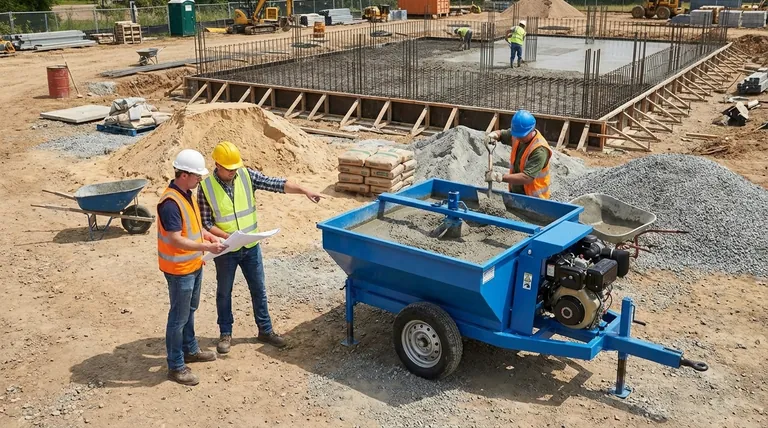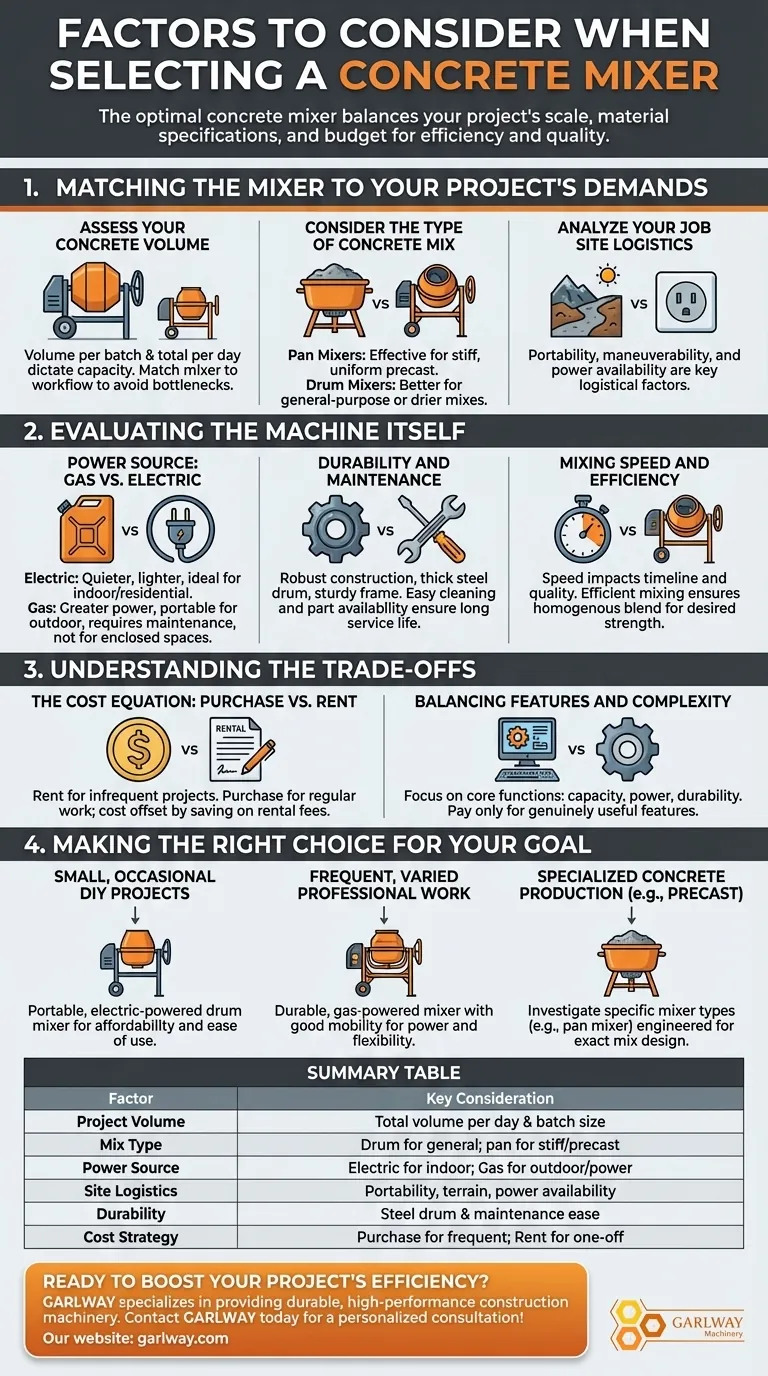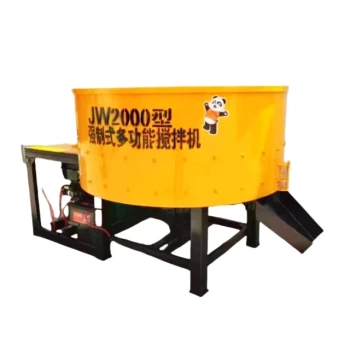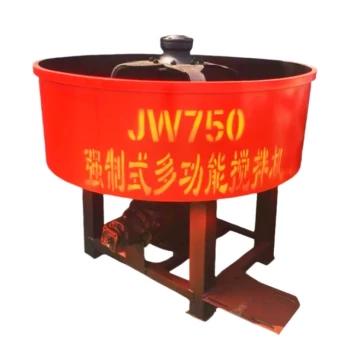At its core, selecting the right concrete mixer involves a careful analysis of your project's specific demands, your job site's logistical constraints, and the machine's operational capabilities. The key factors are not just about the mixer's size but about how its capacity, power source, and mobility align with the volume and type of concrete you need to produce.
The optimal concrete mixer is rarely the largest or most powerful one available. Instead, it is the machine that perfectly balances your project's scale, your material specifications, and your budget, ensuring efficiency and quality without over-investment.

Matching the Mixer to Your Project's Demands
Before evaluating any specific machine, you must first define the work it will be doing. The project itself is the single most important factor in your decision.
Assess Your Concrete Volume
The size and scope of your project directly dictate the mixer's required capacity. A small patio requires a vastly different machine than a foundation for a building.
Consider both the volume per batch and the total volume needed per day. This will help you choose a mixer that can keep up with your workflow without creating costly bottlenecks.
Consider the Type of Concrete Mix
Not all mixers handle all types of concrete equally well. The specific mix design you're using is a critical technical consideration.
For example, pan mixers are highly effective for the stiff, uniform mixes required in precast concrete. In contrast, traditional reversing drum mixers are often better suited for general-purpose or drier mixes.
Analyze Your Job Site Logistics
A powerful mixer is useless if you can't get it where it needs to be. Evaluate the accessibility and terrain of your typical work environment.
Key logistical factors include the need for portability, the maneuverability on uneven ground, and the availability of a suitable power source.
Evaluating the Machine Itself
Once you have defined your project needs, you can begin to compare the specifications of different mixers.
Power Source: Gas vs. Electric
Electric mixers are generally quieter, lighter, and ideal for indoor or residential work where a power outlet is accessible. They are often less powerful than their gas counterparts.
Gas-powered mixers offer greater power and complete portability, making them the standard for larger outdoor job sites where electricity is unavailable. However, they require more maintenance and cannot be used in enclosed spaces.
Durability and Maintenance
A mixer is an investment, and its long-term reliability is paramount. Look for robust construction, such as a thick steel drum and a sturdy frame.
Consider the manufacturer's reputation and the ease of obtaining replacement parts. A machine that is easy to clean and maintain will have a much longer service life.
Mixing Speed and Efficiency
The speed and efficiency of the mixer's action directly impact both your project timeline and the quality of the final concrete.
An efficient mixing process ensures a homogenous blend of aggregate, sand, cement, and water, which is essential for achieving the concrete's desired strength and consistency.
Understanding the Trade-offs
Making a smart decision involves balancing cost, features, and practicality. The most expensive option is not always the best choice for your specific goals.
The Cost Equation: Purchase vs. Rent
For infrequent or one-off projects, renting a mixer is almost always the most cost-effective option.
If you undertake concrete work regularly, purchasing a mixer is a wise investment. Prices for new portable mixers can range from under $200 to over $600, and the cost is quickly offset by saving on repeated rental fees.
Balancing Features and Complexity
Additional features, like onboard computer systems for precise batching, are invaluable for highly specialized commercial work but represent unnecessary complexity and cost for most general applications.
Focus on the core functions that solve your primary problem: capacity, power, and durability. Pay only for the features you will genuinely use.
Making the Right Choice for Your Goal
To simplify your decision, align your choice with your primary objective.
- If your primary focus is small, occasional DIY projects: A portable, electric-powered drum mixer offers the best balance of affordability, ease of use, and sufficient capacity.
- If your primary focus is frequent, varied professional work: A durable, gas-powered mixer with good mobility provides the power and flexibility needed for most job sites.
- If your primary focus is specialized concrete production (e.g., precast): You must investigate specific mixer types, such as a pan mixer, that are engineered for your exact mix design.
Ultimately, choosing the right mixer is an investment in your project's success and efficiency.
Summary Table:
| Factor | Key Consideration |
|---|---|
| Project Volume | Total volume per day and batch size requirements |
| Mix Type | Drum mixer for general use, pan mixer for stiff/precast concrete |
| Power Source | Electric for indoor/residential; Gas for outdoor/power |
| Site Logistics | Portability, terrain, and power availability |
| Durability | Steel drum construction and ease of maintenance |
| Cost Strategy | Purchase for frequent use; Rent for one-off projects |
Ready to boost your project's efficiency with the right concrete mixer?
GARLWAY specializes in providing durable and high-performance construction machinery, including concrete mixers, winches, and batching plants, tailored for construction companies and contractors worldwide. Our experts can help you select the ideal mixer based on your specific project demands, ensuring you get the perfect balance of capacity, power, and value.
Contact GARLWAY today for a personalized consultation and discover how our solutions can streamline your concrete work!
Visual Guide

Related Products
- Ready Mixer Machine for Construction Ready Mix Machinery
- Commercial Construction Mixer Machine for Soil Cement Mixing Concrete
- Auto Concrete Cement Mixer Machine New
- JDC350 Small Cement Concrete Mortar Mixer
- Construction Products Concrete Plant Machine Mixing Concrete Mixer
People Also Ask
- What is the average lifespan of a concrete mixer? Maximize Your Equipment's Lifespan & ROI
- Which type of projects require a concrete mixer? Essential Guide for Construction Pros
- Can a concrete mixer be used for mortar? Understanding the trade-offs for your project
- What is the function of a concrete mixer machine? Achieve Consistent, High-Quality Concrete for Your Projects
- When was the first concrete mixer developed and by whom? Discover the 1900 Breakthrough



















